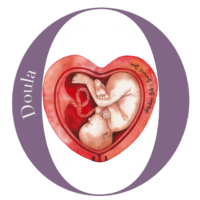Preparing to deliver and to meet your stillborn baby can be an extremely overwhelming time. It can also be very unsettling to discover that he or she has skin changes or a physical appearance that you were not anticipating. The information provided in this article serves to work in conjunction with our How to Bathe a Stillborn Baby article.
Preparing for what to expect in the appearance of your baby can be very helpful – but it can also be painful. Please know that the information in this article may be upsetting.
Maceration (from Latin macerare — soften by soaking) includes all the changes which occur in a fetus retained in utero after death – in a stillborn baby, prior to birth. The appearance of your baby’s skin and features can help determine the time of your baby’s death. Changes take place to your baby’s skin within a few short hours after his or her death.
Macroscopic appearance (How your baby may appear to you):
- Skin — the earliest sign of macerations are seen in the skin 4 – 6 hours after intrauterine death.The epidermis separates from the dermis on applying a pressure (skin slipping). Bullae (bubbles) appear with collection of fluid beneath the epidermis. The desquamation (skin peeling) regularly progresses in time to extensive skin separation on the face, neck, abdomen, limbs and external genitalia exposing red and moist dermal surface.
- Lips – your baby’s lips may be a bright cherry red, or a deep purple color. This can be due to birth asphyxia, or due to the baby’s blood pooling after death has occurred.
- Head — collapse of the skull with overlapping bones, cranial bones become separated from the dura and periosteum. Widely open mouth and eyes are frequent with progressive maceration.
- Internal organs — uniform reddish discoloration due to progressive hemolysis, yellow-brown discoloration occurs with retention for several weeks, dystrophic calcification is possible. Organs most severely affected by autolysis are those from abdominal cavity (liver, spleen, adrenals) and brain which is very soft or semiliquid in severe maceration
- Softening of all organs and connective tissues, laxity of joints.
- Exudation (leaking) of fluid and hemolyzed blood into pleural (lungs), pericardial (heart) and peritoneal (abdomen) cavities
- The fetus looks edematous (hydrops-like), later progressive loss of fluid results in mummification.
- Placenta — remains viable after fetal death in utero. Placental abnormalities can be found in many cases (infarction, retroplacental hemorrhage, cord accidents). Placenta should be always submitted to postmortem examination with the baby.
Classifying stages of maceration:
- 0. — parboiled, reddened skin
- I. — skin slippage and peeling
- II. — extensive skin peeling, red serous effusions in chest and abdomen
- III. — yellow-brown liver, turbid effusion, mummification
Estimating the time of death in stillborns:
- Desquamated skin measuring 1 cm or more in diameter and red or brown discoloration of the umbilical cord correlated with fetal death 6 or more hours before birth.
- Dequamation involving the skin of face, back or abdomen (12 or more hours)
- Desquamation of 5% or more of the body surface (18 or more hours)
- Moderate to severe desquamation, brown skin discoloration of the abdomen (24 or more hours)
- Mummification is seen in fetuses who had died 2 or more weeks before birth
Additional damage to your baby’s skin can be caused by:
- Asphyxia (depletion of oxygen) causing Hypoxia (causing skin to either appear a light blue or a deep cherry red)
- Instrumental delivery (forceps delivery can cause damage to the baby’s skin)
- Vaginal breech delivery
- Macrosomia
- Prolonged or rapid delivery
- Cephalopelvic Disproportion (CPD) (fetopelvic disproportion)
- Bathing your stillborn baby incorrectly (see our article on How to Bathe Your Stillborn Baby)
You can have an idea of what to expect when you meet your baby by viewing our photo section of babies, all donated by mothers of miscarried and stillborn babies.
You can learn about how your baby appears now, in Heaven, by viewing our devotionals section.
Parts of this article were borrowed from the Atlas of Neonatal Pathology












